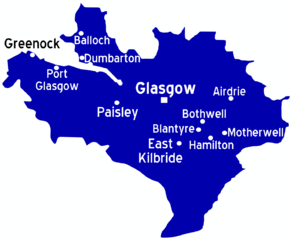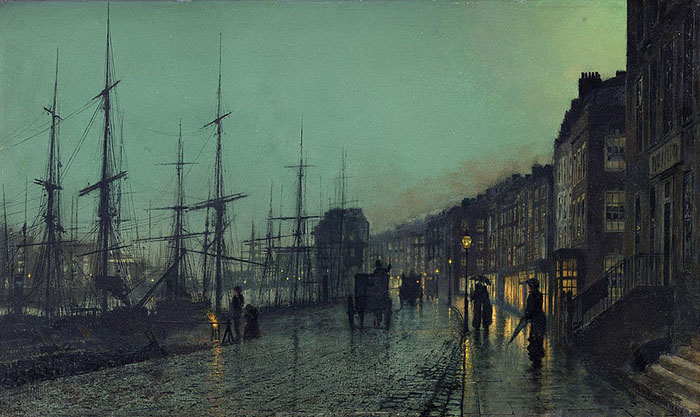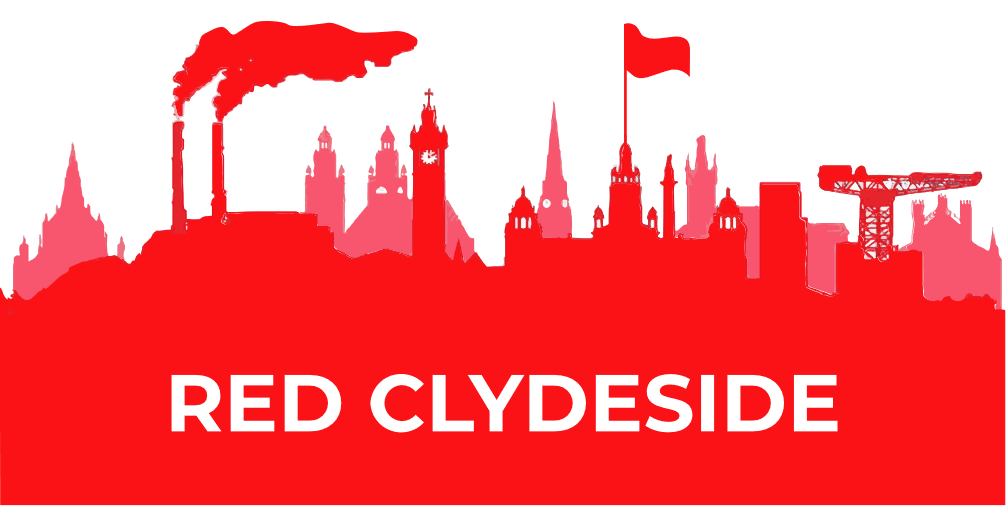 Encompassing the years from just before the outbreak of conflict in World War One in 1914, until the period of the great depression that ravaged Clydeside and many other industrial cities and regions across the UK in the inter-war years, the period widely referred to as ‘Red Clydeside’ was one of the most volatile times in Scotland’s political history, and perhaps in the political history of the UK over the past century and more. During this era a number of events took place which shook the British establishment and which had the potential to generate widespread economic, social and political conflict, creating the opportunity for socialist rebellion in the then ‘Second City’ of the British Empire, Glasgow. Making sense of this particular conjuncture in British history means locating Red Clydeside within a longer economic, social, geographical and historical timeframe, as well as in a wider global context.
Encompassing the years from just before the outbreak of conflict in World War One in 1914, until the period of the great depression that ravaged Clydeside and many other industrial cities and regions across the UK in the inter-war years, the period widely referred to as ‘Red Clydeside’ was one of the most volatile times in Scotland’s political history, and perhaps in the political history of the UK over the past century and more. During this era a number of events took place which shook the British establishment and which had the potential to generate widespread economic, social and political conflict, creating the opportunity for socialist rebellion in the then ‘Second City’ of the British Empire, Glasgow. Making sense of this particular conjuncture in British history means locating Red Clydeside within a longer economic, social, geographical and historical timeframe, as well as in a wider global context.
1919 witnessed the outbreak of a number of large-scale disputes, strikes and protests across the UK and Ireland. Though not everywhere, these were often centred on major industrial centres and important towns and cities.
It is the coming together of apparently disconnected, but crucially interlinked, events and struggles in a period of profound social, economic and political change, together with rising international tensions as the British Empire came under serious threat from Germany, leading to the First World War in 1914, which sets the scene for the emergence of Red Clydeside. Understanding Red Clydeside means, therefore, taking account of the following interconnected developments:
- The rapid industrialisation and urbanisation of Glasgow and Clydeside in the Victorian era
- Britain’s imperial expansion during the nineteenth century
- Rising global tensions and the outbreak of World War One
- Mass immigration into Glasgow
- The Highland Clearances, 1770s to late 1800s
- Legacies of famine in Ireland, 1845-1849 and immigration to Scotland
- Mass poverty and severe housing shortages and appaulling housing conditions on Clydeside
- The emergence of an industrial working class
- The growth and spread of trade union organisation
By the late nineteenth and early twentieth centuries, the Clydeside region was one of the most significant industrial centres in the entire UK. Its factories, engineering plants and shipyards had been instrumental in fuelling the expansion of the Empire during the second half of the nineteenth century. With the onset of conflict with Germany in 1914, it was Clydeside that produced many of the instruments of war. Glasgow and Clydeside were crucially important locations like they had never been before, and like they never would be again. For good and for bad, this was the pinnacle of Clydeside’s economic and industrial might.
It was rapid industrialisation and the accompanying mass in-migration of people that led to the rapid growth of Glasgow and the surrounding towns that make-up central Clydeside. From a relatively small town in 1800, by the end of the 1800s Glasgow was a key location in the ‘workshop of the world’, with Clyde-built ships, locomotives and engineering products being exported across the Empire and to places and countries beyond.
 Shipping on the Clyde, Atkinson Grimshaw, 1881. Glasgow was a significant port as well as a major shipbuilding centre during the late nineteenth and early twentieth centuries.
Shipping on the Clyde, Atkinson Grimshaw, 1881. Glasgow was a significant port as well as a major shipbuilding centre during the late nineteenth and early twentieth centuries.
For more information about Glasgow and Clydeside’s industrial importance during this period, you are recommended to look at the following articles from the webpages, The Glasgow Story:
- Michael Moss, Industrial Revolution: 1770s to 1830s
- W. Hamish Fraser, Second City of The Empire: 1830s to 1914
In their tens of thousands, people were attracted to the city by the promise of work. A significant number of these migrants came from Ireland and the Scottish Highlands, areas that had been experiencing large-scale population loss as a result of the impact of British colonial policies towards Ireland, and the continuing legacies of the forced removal of poor tenants from the Highlands by landlords and Scotland’s landed aristocracy.
For more information about these events and migrations, see:
- James Hunter (2000) The Making of the Crofting Community, Edinburgh, John Donald
- Tom M. Devine (2018) The Scottish Clearances: A History of the Dispossessed, London, Allen Lane/Penguin
- Peter Aitchison and Andrew Cassell (2019) The Lowland Clearances: Scotland’s Silent Revolution 1760–1830, Edinburgh, Birlinn.
- John Gray Centre, ‘A brief history of Emigration and Immigration in Scotland: Research Guide 2’
Glasgow and its surrounding environs might have been an important magnet drawing in people from far and wide, but like other growing cities across Britain at the time, it was ill-equipped to provide adequate shelter or to feed this rapidly growing population. The consequences of this continued to shape housing in the city throughout the twentieth century. It is from this period that Glasgow comes to be characterised by long-term housing problems, reflected in the severe shortage of affordable housing to rent, massive overcrowding which was the worst of any European city, and the predominance of poorly built slum housing, many in the form of overcrowded tenements which lacked even the most basic amenities. Many of these tenements were located adjacent to the shipyards spread along the upper reaches of the River Clyde in places such as Govan and Partick, two of Glasgow’s historic working-class communities:
From the late nineteenth century, and indeed during the century to follow, housing problems and a crisis in housing provision would become ever more associated with Glasgow, giving rise to numerous struggles for better housing, fairer rents, and demands for the state to provide affordable rentable accommodation. Mass immigration was to stamp Glasgow with another unwanted long-lasting reputation, this time for religious and sectarian conflict. Throughout the nineteenth century, World War One and into the 1920s, Ireland experienced long-term economic depression and social conflicts, as well as struggles for independence from Britain. The devastation of life in Ireland brought about by famine in 1845-1849, ‘the great hunger’, also fuelled Irish immigration to the West of Scotland. The politics of Ireland were to be imported into Glasgow, shaping the legacy of the city which continues to this day. While often over-emphasised and misrepresented, nonetheless the conflicts generated by immigration from Ireland before and during World War One, continues to have some bearing on Glasgow’s politics, culture and ongoing strife and controversies into the early twenty-first century.
 This article is part of the Revisiting Red Clydeside: 'Bloody Friday': The Battle of George Square, Glasgow, 1919 collection. All the media-rich articles in this collection provide an introduction to Red Clydeside and consider the developments that led to the Battle of George Square in Glasgow in January 1919, and also reflect on the enduring legacies of this period.
This article is part of the Revisiting Red Clydeside: 'Bloody Friday': The Battle of George Square, Glasgow, 1919 collection. All the media-rich articles in this collection provide an introduction to Red Clydeside and consider the developments that led to the Battle of George Square in Glasgow in January 1919, and also reflect on the enduring legacies of this period.







Rate and Review
Rate this article
Review this article
Log into OpenLearn to leave reviews and join in the conversation.
Article reviews